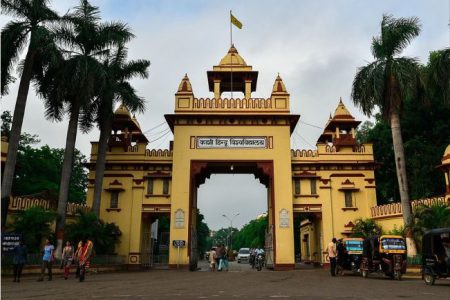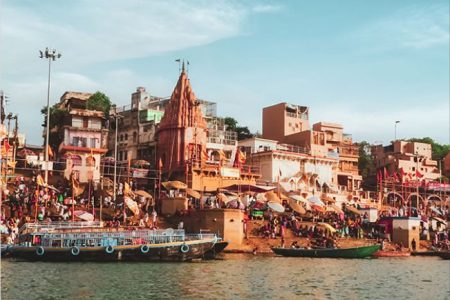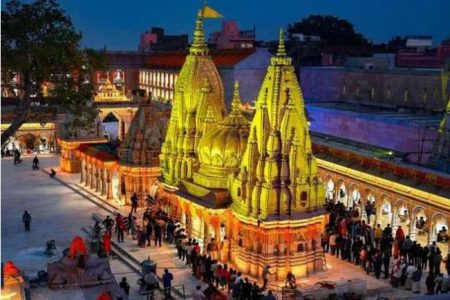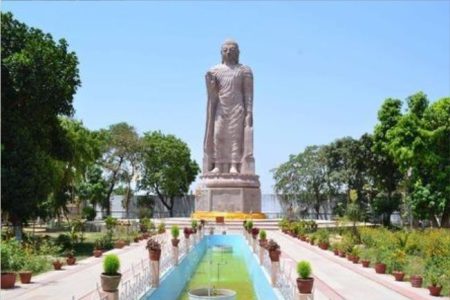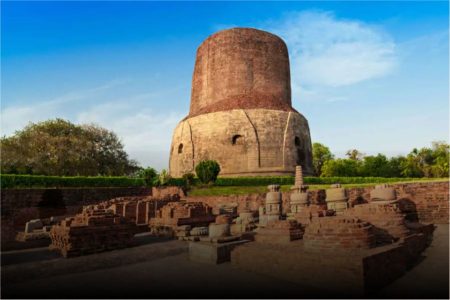POPULAR PLACES
LET'S EXPLORE OUR
Shri Kashi Vishwanath
Kashi Vishwanath Temple is a revered Hindu temple in Varanasi, Uttar Pradesh, India. It is dedicated to Lord Shiva and stands on the banks of the river Ganga. The temple has been demolished by Muslim rulers in the past, and the current structure was built in 1780 by Ahilyabai Holkar. The temple is managed by the government of Uttar Pradesh since 1983.
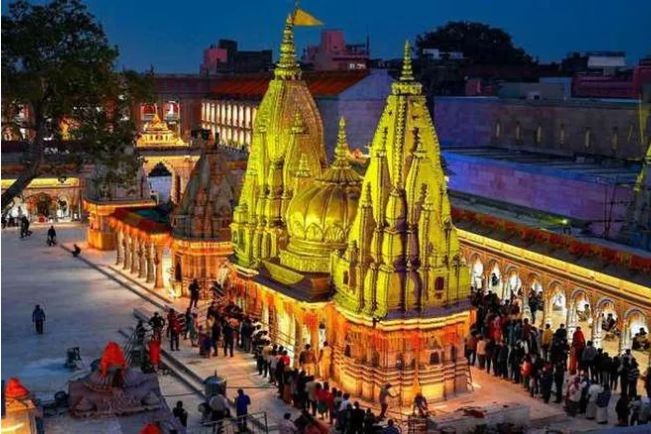
Shri Vishwanath Mandir also known as Vishwanath Mandir, Vishwanath Temple, New Vishwanath Temple and Birla Temple is one of the most famous Hindu temples and biggest tourist attractions in the holy city of Varanasi. The temple is situated in Banaras Hindu University and is dedicated to the Lord Shiva.
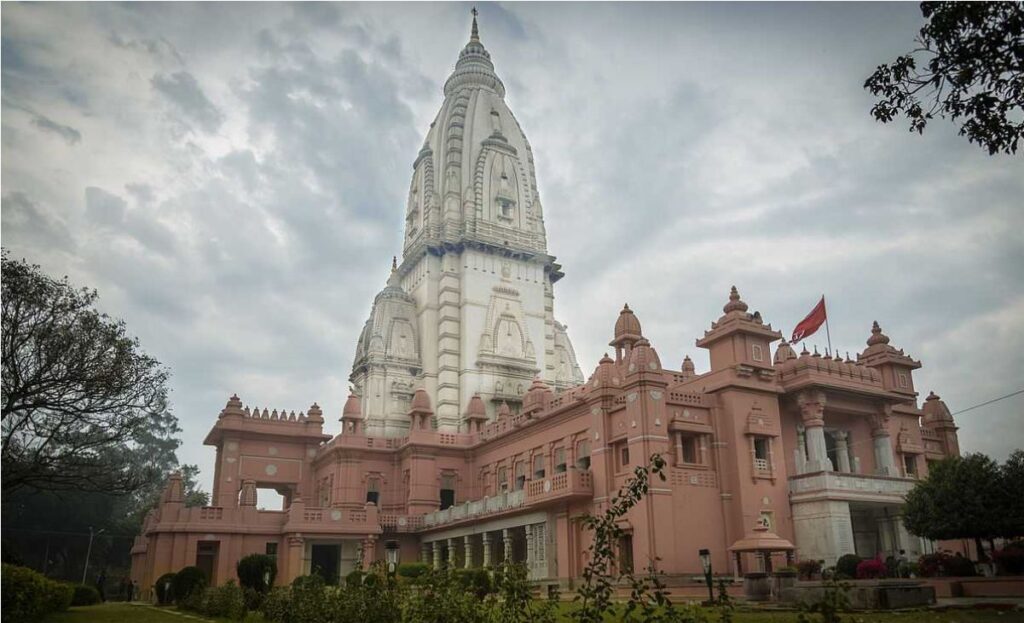
Banaras Hindu University
Banaras Hindu University is a central university located in Varanasi. It is often referred to as BHU. This university was established by Mahamana Madan Mohan Malviya in the year 1916 on the holy day of Basant Panchami. According to the documents, the founder of this university is Madan Mohan Malviya.

Dashashwamedh Ghat
Dashashwamedh Ghat is a popular ghat located near the Vishwanath Temple in Varanasi, Uttar Pradesh. It is associated with two Hindu legends: Brahma creating it for Shiva and sacrificing ten horses during Dasa-Ashwamedha yajna. The ghat was built by Peshwa Balaji Baji Rao in 1748 and later rebuilt by Queen Ahilyabahi Holkar in 1774. Nearby is the Jantar Mantar observatory built by Maharaja Jai Singh of Jaipur in 1737.
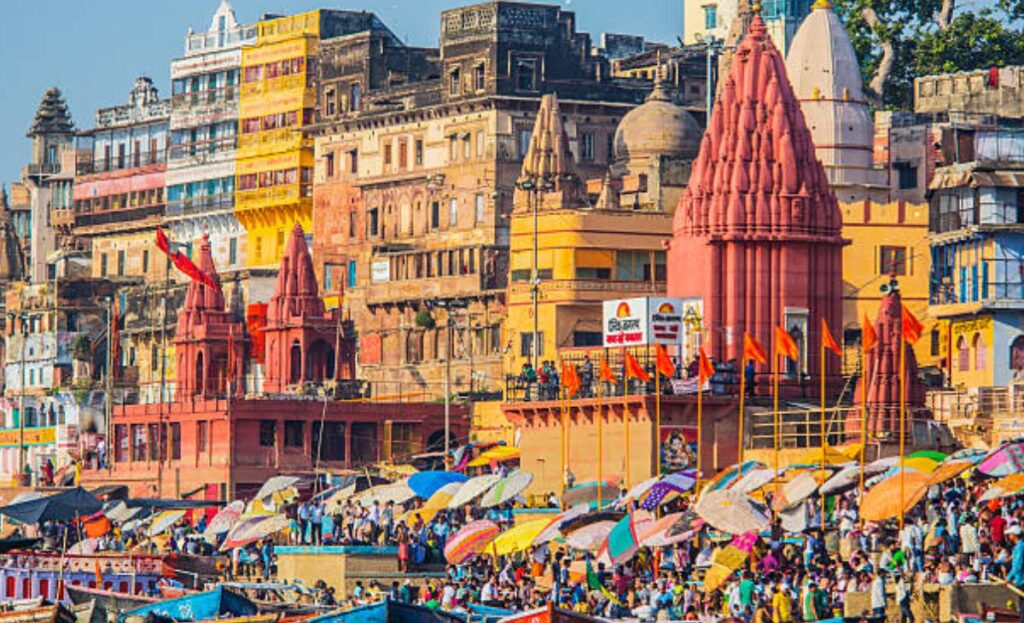
Manikarnika Ghat
Manikarnika Ghat, situated along the river Ganges in Varanasi, Uttar Pradesh, is a revered cremation ground in Hinduism, believed to provide moksha to the soul. Elderly people from across India visit the ghat to spend their last days and attain a painless death. It is named after Sati’s earrings, and the Hindu genealogy registers of Varanasi are kept here.
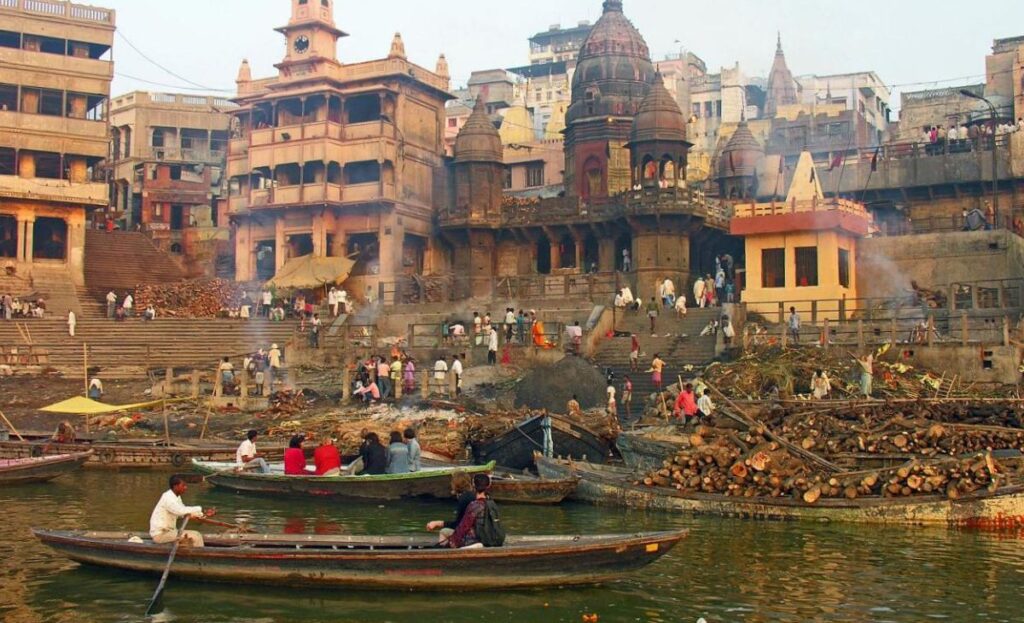
Ramnagar Fort
Ramnagar Fort is a sandstone fortress in Ramnagar, Varanasi, located on the eastern bank of the Ganges opposite Tulsi Ghat. It was built in 1750 by Maharaja Balwant Singh in the Mughal architectural style. Anant Narayan Singh, also known as the Maharaja of Benares, resides in the fort, although the royal title has been abolished since 1971.

Assi Ghat
Assi Ghat is the southernmost ghat in Varanasi. To most visitors to Varanasi, it is known for being a place where long-term foreign students, researchers, and tourists live. With hosting Subah-e-Banaras in the morning, assi ghat provides a spectacular notion of river Ganga.

Sarnath
Sarnath is a place located 10 kilometres northeast of Varanasi near the confluence of the Ganges and the Varuna rivers in Uttar Pradesh, India. The Deer Park in Sarnath is where Gautama Buddha first taught the Dharma, and where the Buddhist Sangha came into existence through the enlightenment of Kondanna.
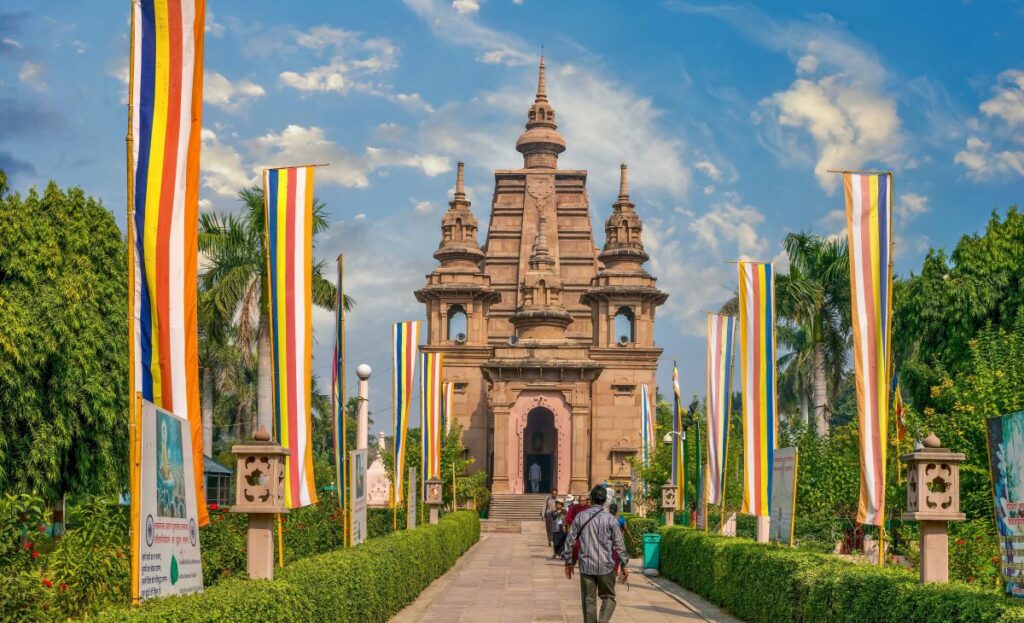
Man Singh Observatory
The Man Singh Observatory is a masonry observatory on the western bank of the Ganges river, featuring devices for measuring time and observing celestial bodies. Its architecture blends Mughal and Rajput styles, with prime instruments including the Samrat and Chakra Yantras. The observatory offers stunning views of the Ganges.
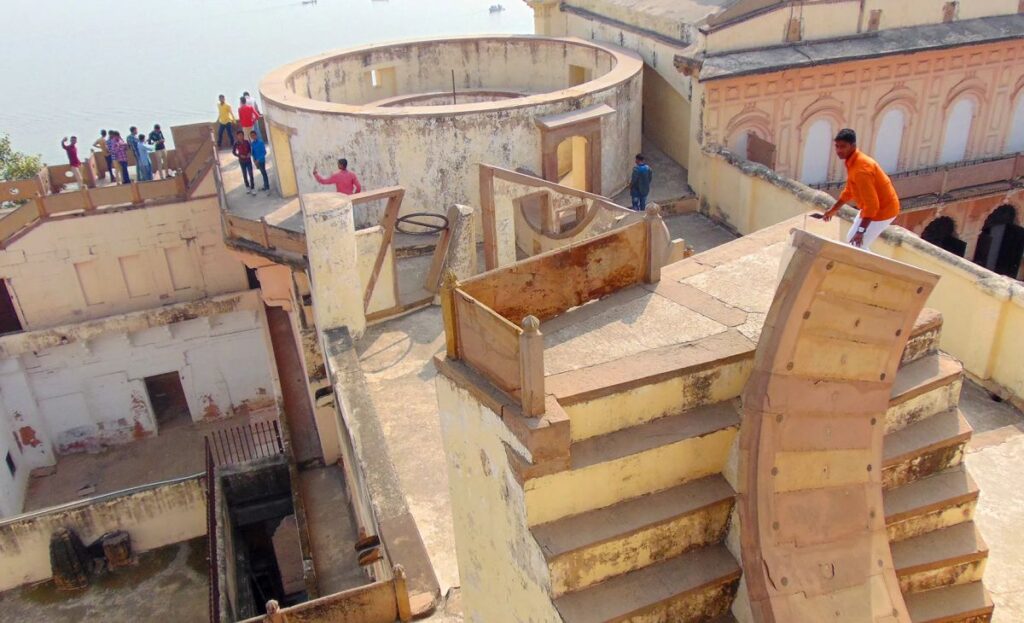
Sankat Mochan Temple
The Sankat Mochan Hanuman Temple in Varanasi is a Hindu temple dedicated to Lord Hanuman. Established by Sri Goswami Tulsidas in the early 16th century, the temple is situated on the banks of the Assi river. The temple offers special offerings like “besan ke ladoo” and has a unique idol where Lord Hanuman faces his Lord, Rama.

Shri Durga Temple
Durga Mandir, also known as Durga Kund Mandir and Durga Temple, is one of the most famous temples in the holy city of Varanasi. This temple has great religious importance in Hinduism and is dedicated to the Maa Durga. Durga Mandir was constructed in 18th century by Rani Bhabani of Natore.
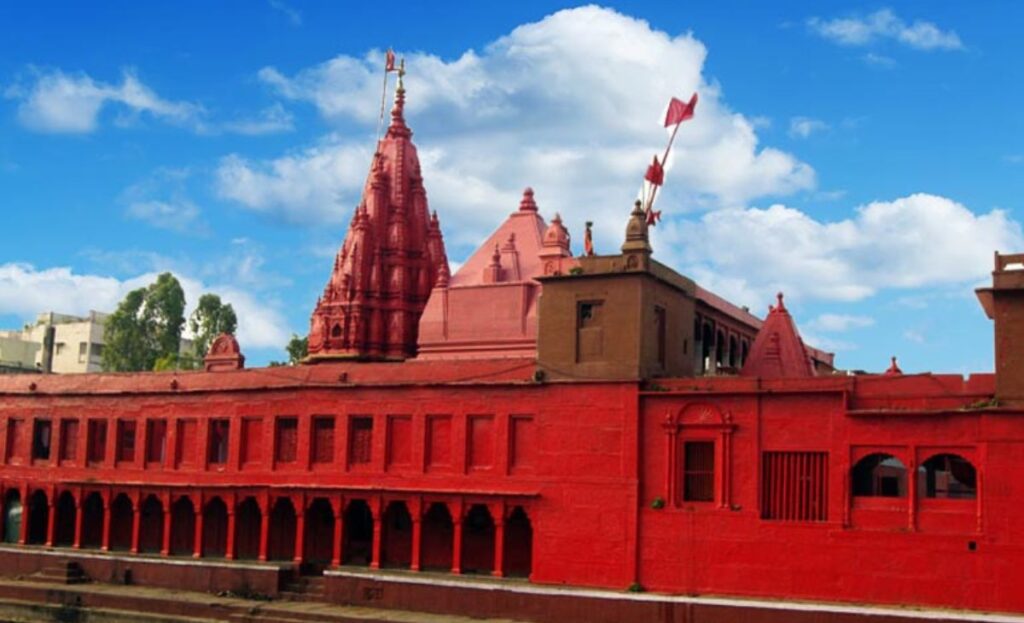
Bharat Mata Mandir
Bharat Mata Mandir is located on the Mahatma Gandhi Kashi Vidyapith campus in Varanasi, Uttar Pradesh, India. Instead of traditional statues of gods and goddesses, this temple has a huge map of undivided India carved in marble. This temple is dedicated to Bharat Mata and claims to be the only one of its kind in the world.
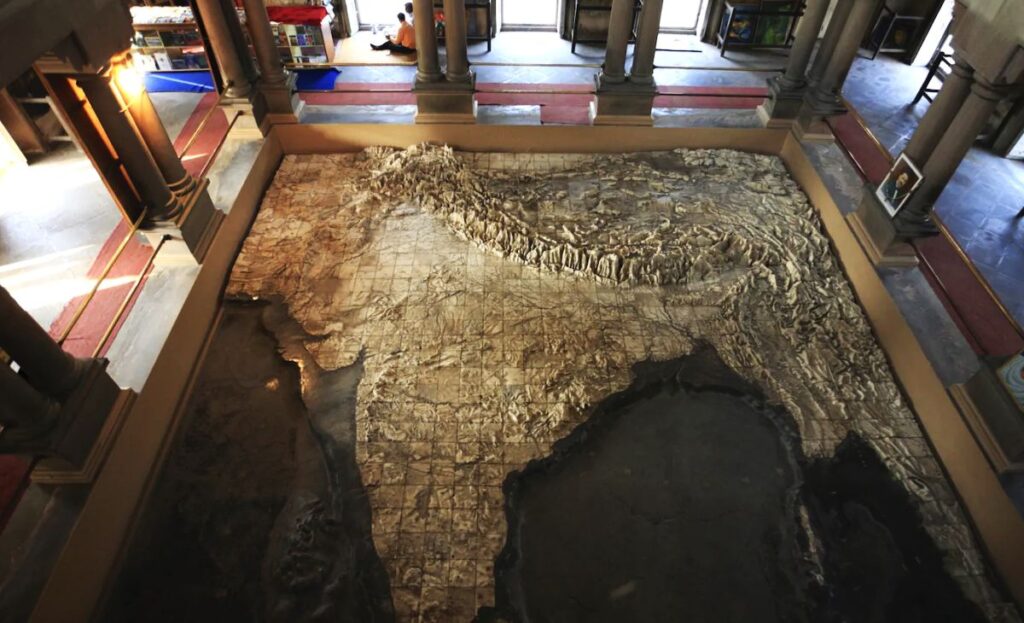
Tulsi Manas Mandir
Tulsi Manas Mandir is one of the most famous temples in the holy city of Varanasi. This temple has great historical and cultural importance in Hinduism since the ancient Hindu epic Ramcharitmanas was originally written at this place by Hindu poet-saint, reformer and philosopher Goswami Tulsidas in the 16th century.
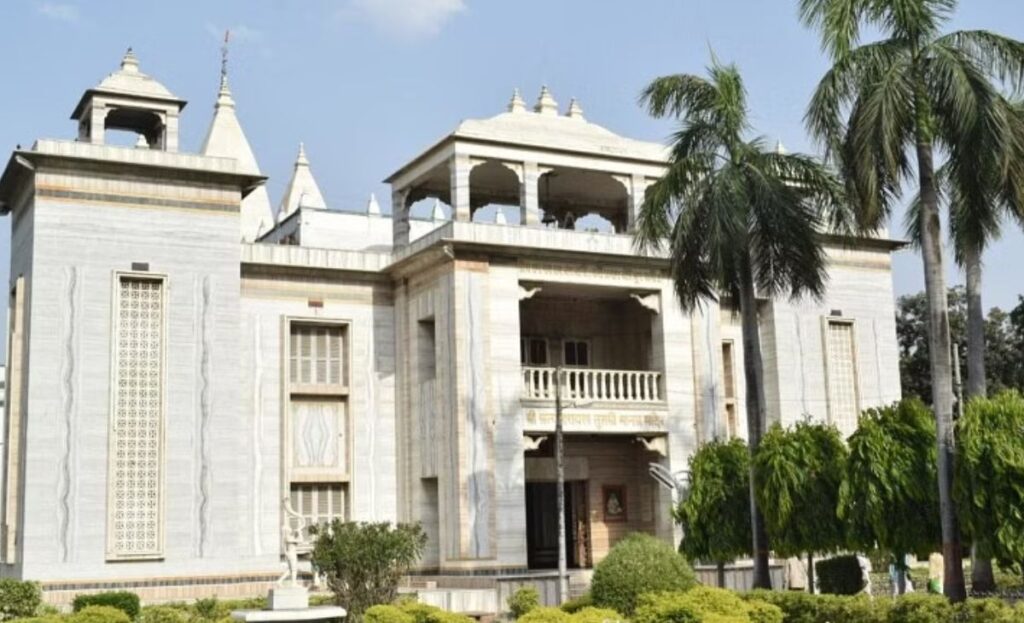
Gyanvapi Masjid
The Gyanvapi Masjid, sometimes called the Alamgir Masjid, is a disputed mosque located in Varanasi. This mosque is adjacent to the Kashi Vishwanath temple. In 1669, the Mughal invader Aurangzeb destroyed the ancient Vishweshwar temple and made this Gyanvapi mosque. Gyanvapi is a Sanskrit word which means well of knowledge.
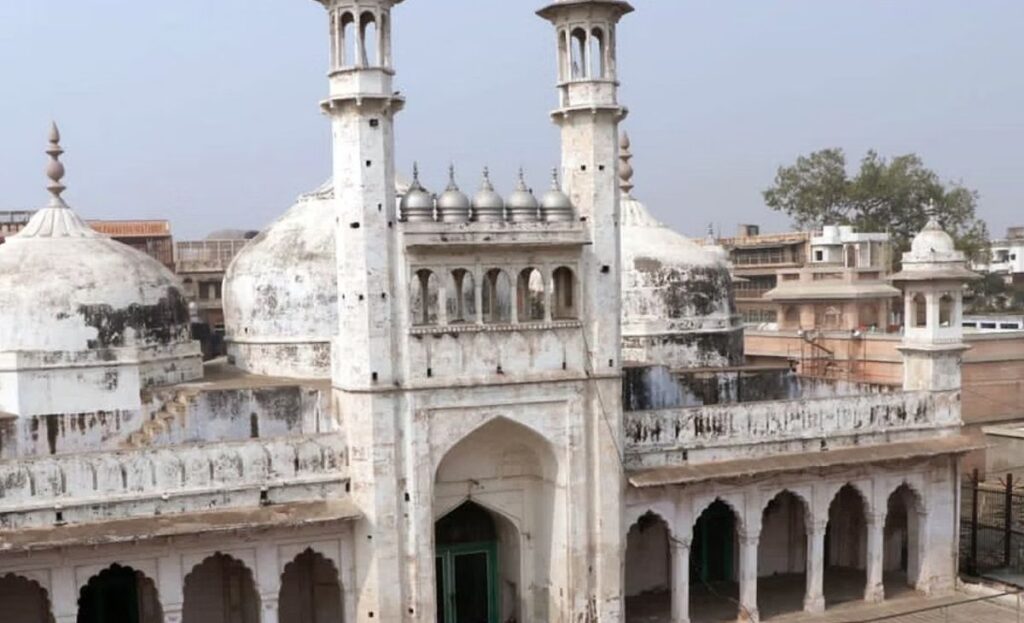
Ashoka Pillar
The Lion Capital of Ashoka, erected by the Mauryan emperor Ashoka in Sarnath, India, is a head of a column adorned with four life-sized lions on a drum-shaped abacus. It commemorated the site of Gautama Buddha’s first sermon and was excavated in the early 20th century. The capital remains in its original location in Sarnath, protected but on view for visitors.
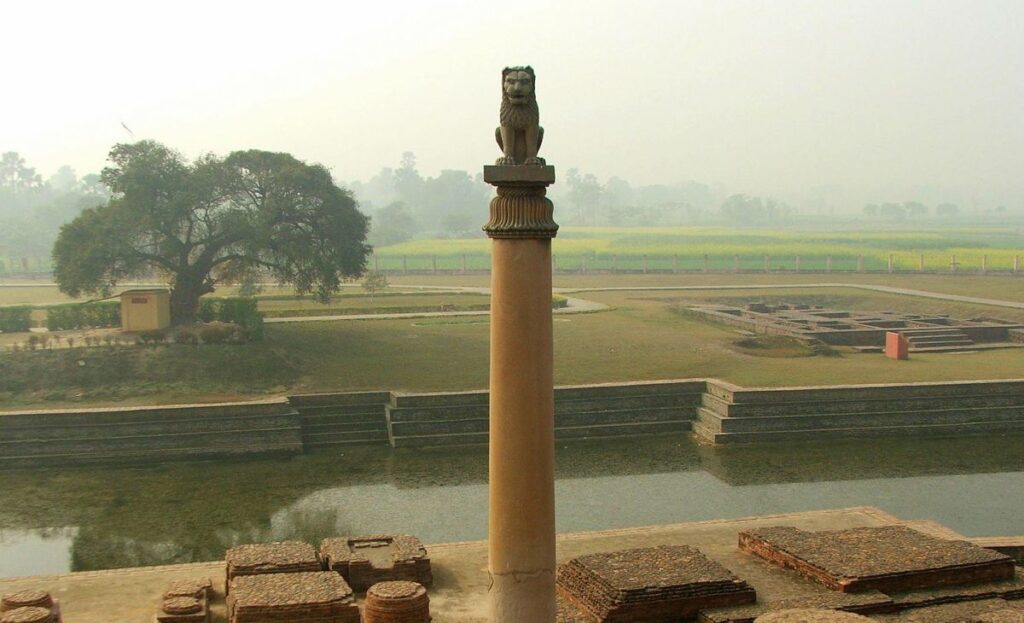
Bharat Kala Bhavan
Bharat Kala Bhavan is a university museum located in Banaras Hindu University, Varanasi, India. It has been instrumental in the dissemination of knowledge on Indian art and culture. It is one of the important touristic attractions in the Banaras Hindu University and in the city of Varanasi.
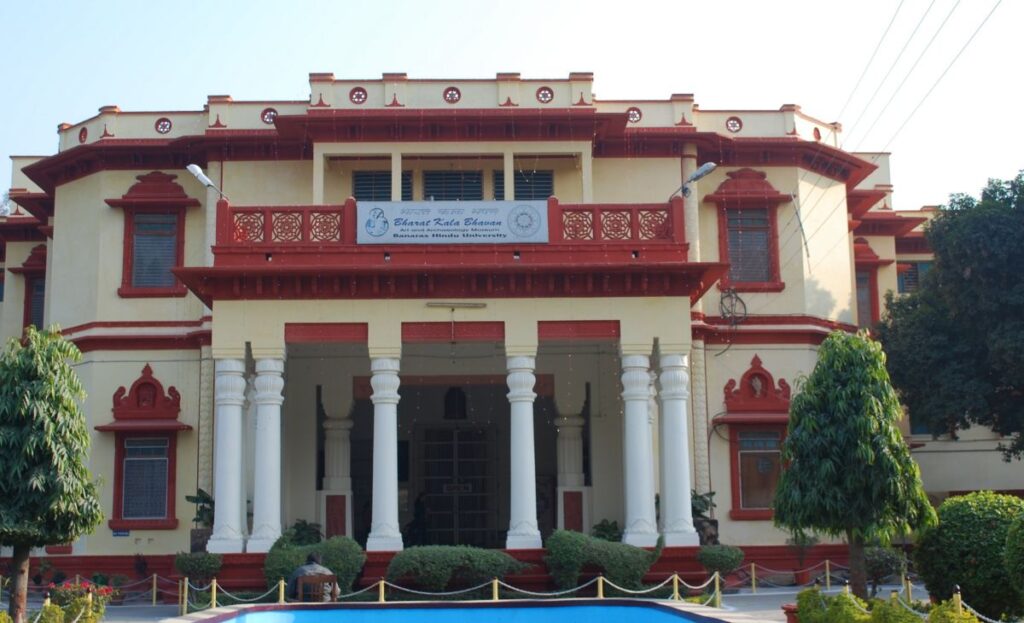
Alamgir Masjid
The Alamgir Mosque, Varanasi, Aurangzeb’s Mosque, is a mosque built in the 17th century by Mughal Emperor Aurangzeb in the Indian state of Uttar Pradesh.
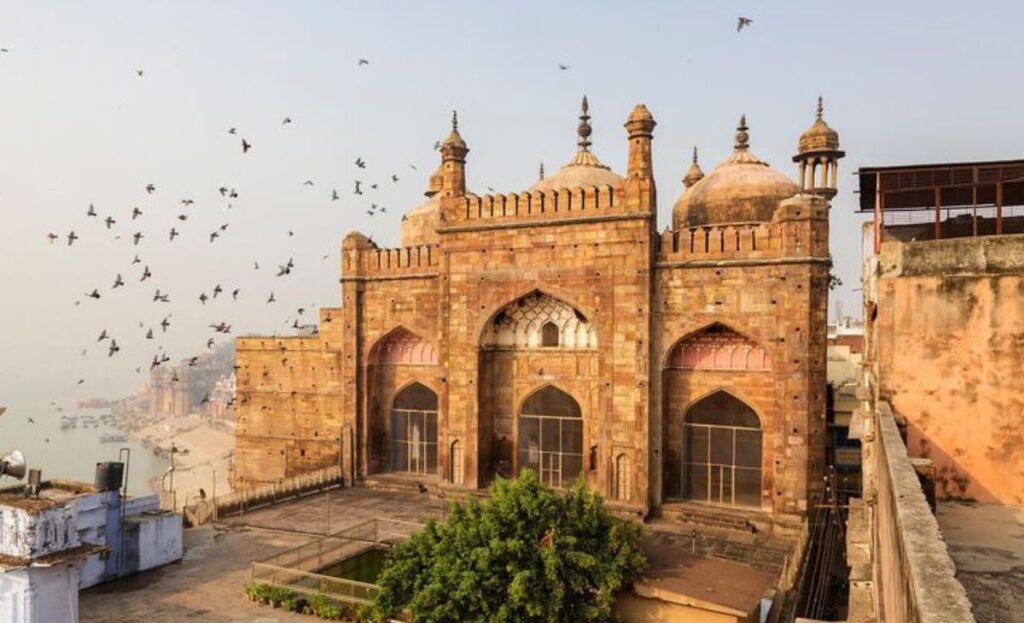
Chinese Buddhist Temple
This Chinese temple in bright and yellow color represent Chinese architecture. It was built in 1939. The best part of this temple is, the entire life of Buddha is shown in photos on two big boards with English and Hindi write-up.
Worth seeing !!
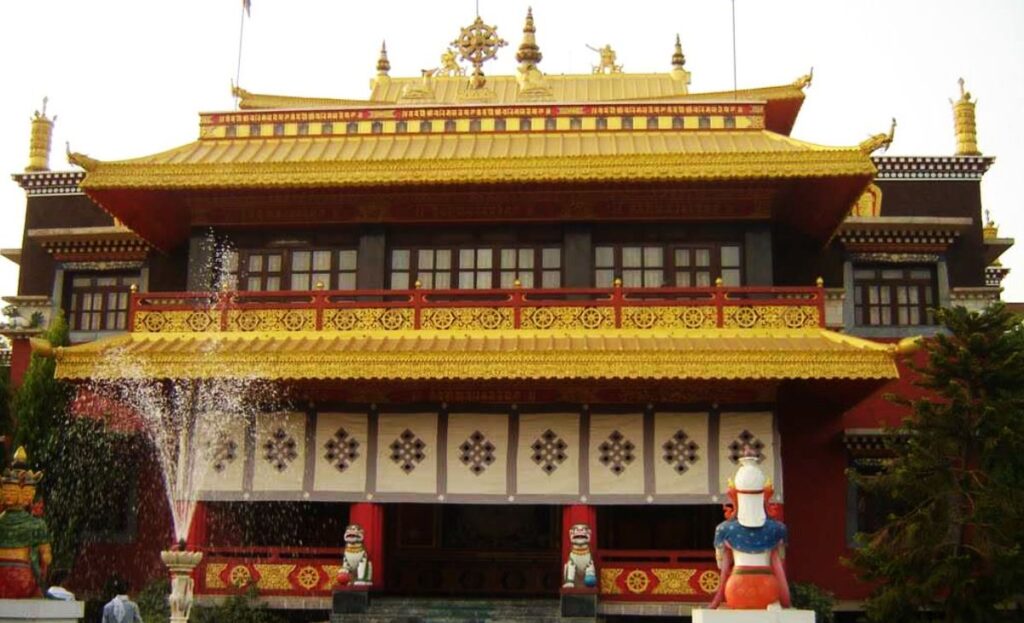
Nepali Temple
Shri Samrajeswar Pashupatinath Mahadev Mandir, also known as the Nepali Mandir, Kanthwala Mandir and Mini Khajuraho, is a famous temple in Varanasi dedicated to Lord Shiva. Built in the 19th century by the King of Nepal, the temple is made of terracotta, stone, and wood and is a replica of the Pashupatinath Temple in Kathmandu.
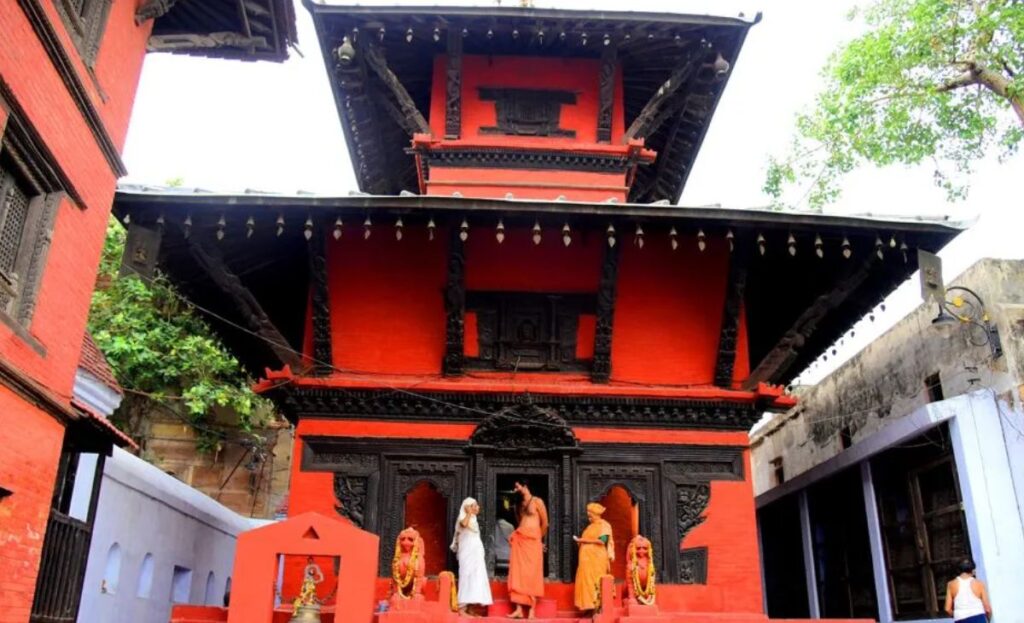
Panchganga Ghat
Landmark ghat & religious site for spiritual bathing, prayer & holiday festival events.
The ghat where Sant Kabeer got initiated by Swami Ramananda, this ghat is really beautiful and does worth a visit. Comparatively, it is less crowded so it still holds its serenity.

Mahamrityunjay Mahadev
Ravaneshwar Mandir is one of the most famous temples in the holy city of Varanasi. This temple has great historical and cultural importance in Hinduism

Shri Vishalakshi Mata Shaktipeeth
The Vishalakshi Temple or Vishalakshi Gauri Temple is a Hindu temple dedicated to the goddess Vishalakshi, at Mir Ghat on the banks of the Ganges at Varanasi in Uttar Pradesh, India. It is generally regarded as a Shakti Pitha, the most sacred temples dedicated to the Hindu Divine Mother.

- 1500.00
Golden Temple
Serene Buddhist temple complex featuring a whimsically painted shrine interior & art.

- 1500.00
Shree Annapurna Mandir
Annapurna Devi Mandir, also known as Annapurna Mata Mandir and Annapurna Mandir, is one of the most famous Hindu temples (Mandir) in the holy city of Varanasi. This temple has great religious importance in Hinduism and is dedicated to the goddess Annapurna. Annapurna is the Hindu goddess for nourishment and is a form of the goddess Parvati. The current Annapurna Mandir was constructed in the 18th century by Maratha Peshwa Bajirao.
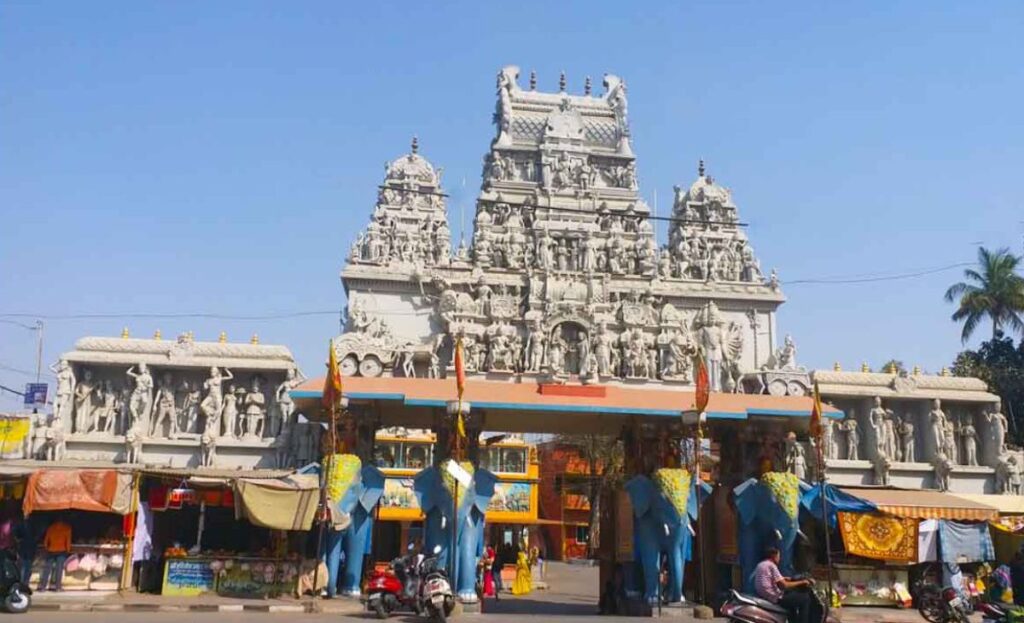
Ratneshwar Mahadev
Ratneshwar Mahadev Mandir is one of the most photographed temples in the holy city of Varanasi in Uttar Pradesh, India. The temple, while apparently well-preserved, leans significantly towards the back side, and its garbhagriha is generally below the water much of the year, except for a few months during the summer. The Ratneshwar Mahadev Temple is situated at Manikarnika Ghat, Varanasi. The temple has developed a nine-degree slant.

- 1500.00
Garden of Spiritual
The Garden of Spiritual Wisdom in Sarnath, Varanasi is a new tourist destination. Located behind the Chaukhandi Stupa, the garden uses a mix of exhibits and sculptures to convey the essentials of Buddhism and Indian spirituality.

- 1500.00
Sant Ravidas Smarak Park
Sant Ravidas Ghat is the southernmost and largest ghat in Varanasi. To most visitors to Varanasi, it is known for being an important religious place for Ravidasis with a 25 acres park known as Sant Ravidas Smarak Park.
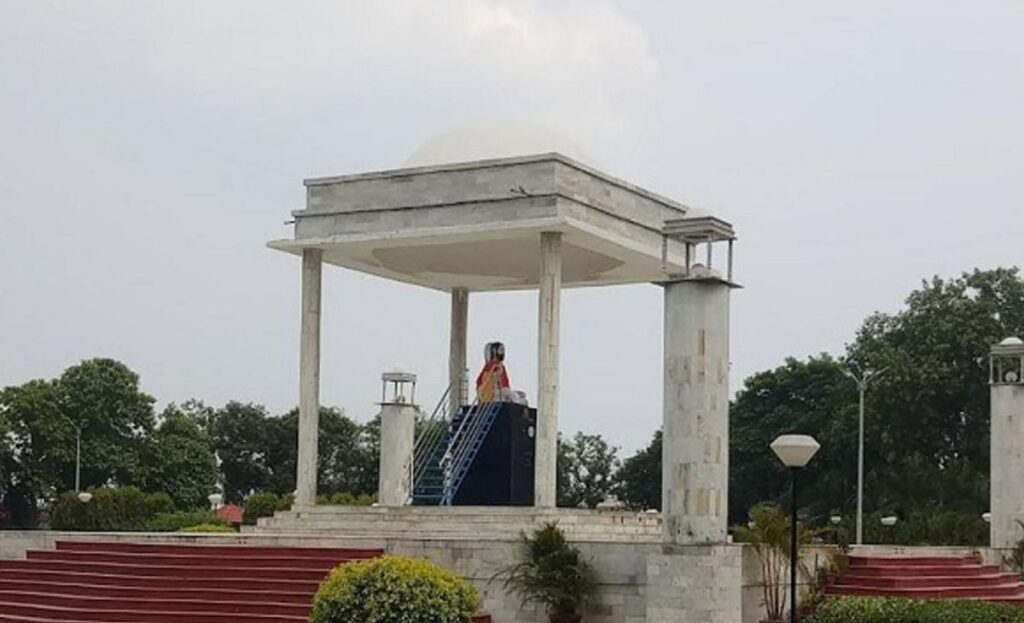
Varanasi Fun City
Small water park with slides, a wave pool & play fountains for splashing, plus animal statues.

